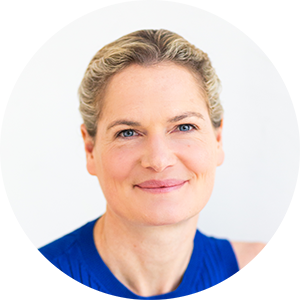Sleep Calm & Carry On: How Can I Use a Sleep Diary to Improve My Sleep?
A sleep diary can be a really useful tool. It can be used to track how much sleep you’re getting, as well as to identify what is impacting on the quality of your sleep.
How to keep a sleep diary

Print out the sleep diary template and stick it somewhere you will see it every morning, such as on the fridge, or by the kettle where you make tea.
Aim to spend 2 minutes each day reflecting on your sleep the night before. If you miss a day, don’t worry about it. Just re-start your sleep diary again as soon as you remember.
As well as your bedtime and wake time, our sleep diary also has a space to write down whether you woke up during the night and if so, for how long for.
Fill it in based on what you remember - it doesn’t need to be perfectly accurate. In fact, if you wake up and look at the clock to see exactly how long you were awake for, this will almost certainly make you more anxious. What’s the knock on effect of being more anxious? It will make it harder to fall back to sleep. So, for this reason, I would recommend keeping clocks and phones out of sight when you’re in bed.
Do I need a wearable sleep tracker?
You may have a wearable tracking device, and wonder if you should use that instead. Wearables can be a quick and easy tool for looking at patterns over time, but they are of varied accuracy. If you have a digital tracker, I’d still recommend writing some of your sleep details down on paper. Partly because this allows you to sense-check how accurate the data looks, and partly because the diary contains some added ingredients. Within our sleep diary, you’ll find sections for habit tracking, and sleep efficiency, as well as reflecting on your mood the previous day.
Sleep habit tracking
There are also 3 lines in the diary to write in your pro-sleep habits. These are positive behaviours which could improve the quality of your sleep. We’ll learn more about these in the next step, but in the meantime, here are some ideas of the types of things you could include in this section:
- Spend at least 10 minutes outside within an hour of waking up
- Get physically active for 30 minutes
- Choose decaf drinks after lunch
- Have a warm bath or shower before bed
Every time you repeat one of the habits on your list, congratulate yourself and give yourself a tick. Doing this will help you to feel a sense of achievement and makes it more likely that you’ll repeat the behaviour. Over time, you might also start to notice that repeating these habits is linked to a change in your sleep, or energy.
Calculating your sleep efficiency

Finally, the sleep diary asks you to calculate your Sleep Efficiency, which is the proportion of time in bed that you were asleep. A high sleep efficiency usually suggests a healthy sleep pattern.
Ideally we’d have data from a whole week to work out an average, but we can start by looking at last night. Simply write down the answers to these two questions:
- How many hours were you asleep for last night? This only includes time asleep, doesn’t count any time you were awake in the middle of the night.
- How many hours were you in bed for in total? This includes time scrolling on your phone, reading, snoozing, or checking your phone in the morning
So, for example:
If I went to bed at 10pm and got out of bed at 7am, my time in bed was 9 hours.
Let’s suppose I watched TV in bed for an hour, then it took me another hour to fall asleep.. and I woke up a few times, staying awake for another hour. My time asleep was only 6 hours.
Sleep Efficiency = Time asleep / Time in bed * 100 to get a percentage.
So, in my case this would be: 6 divided by 9, *100, giving me a sleep efficiency of 67%.
A healthy sleep efficiency is anything above 85%.
To increase my sleep efficiency, I could start to go to bed a bit later, rather than watching TV in bed, and/or I could get out of bed earlier.
Improving your sleep efficiency
To increase my sleep efficiency, I could start to go to bed a bit later, rather than watching TV in bed, and/or I could get out of bed earlier.
Try to only get into bed when you’re really sleepy. You want your brain to associate your bed with sleep – not worry - just sleep. Intimacy with your bed partner, that’s OK, maybe reading 1 or 2 pages of a book - but not your phone, not work, not emotionally charged conversations; just rest.
How to keep a sleep diary: a quick recap
So, to recap, to monitor your sleep efficiency this week, keep a notepad by your kettle, or print off our sleep diary template and stick it on the fridge to fill out every morning. It only takes a minute, and it can really help to spot patterns and track improvements.
Alternatively, watch the video below for a visual and audial recap:
Next time, we’ll look at why tracking your sleep consistency is so important.
Thanks for reading and sleep well.

Dr Sophie Bostock - Dr Sophie Bostock
Sophie brings a wealth of expertise to the role having spent the last six years researching and championing the importance of sleep science in NHS and corporate settings. Sophie was responsible for improving access to the award-winning digital sleep improvement programme, Sleepio, as an NHS Innovation Accelerator Fellow. She has delivered hundreds of talks, including for TEDx and Talks@Google, and regularly features as a media sleep expert.